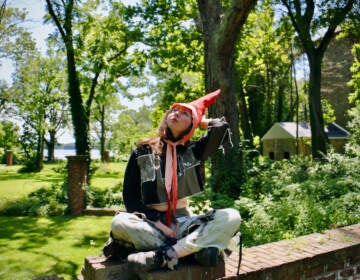Secret garden alert: Neglected for 20 years, the Rosenbach revives its urban oasis
Ignored behind a brick wall for 20 years, the rare book library and museum revived its garden for visitors.
Listen 1:40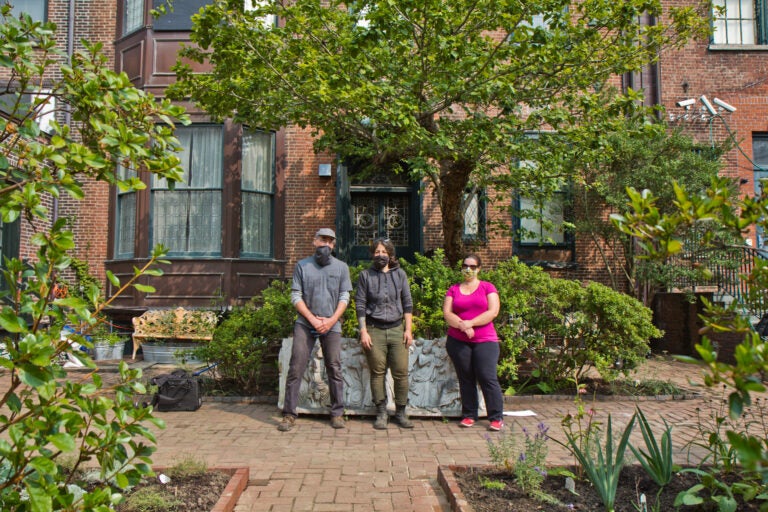
Steve Bartholomew (left), Rosenbach Museum visitor services staff, Christina Doe (center), facilities manager, and Emilie Parker (right), director of education, at the Rosenbach’s garden. (Kimberly Paynter/WHYY)
The Rosenbach Library and Museum in Philadelphia’s Rittenhouse Square has been closed since March due to the coronavirus pandemic, and has not yet announced its reopening.
But Thursday it debuted its outdoor garden, which had been all but abandoned for 20 years. No one had seen it, except for visitors using the wheelchair ramp to access the rare book library inside.
“It really had been let go,” said Christina Doe, the Rosenbach’s facilities manager. She is also an avid gardener, so the job of reviving a garden gone to seed rested on her.
“We had some bricks reset, these beds re-edged,” she said, pointed to the brick pavers that were once choked with sprawling English Ivy. “There was decay and collapse. It was here, but it needed a great deal of work.”
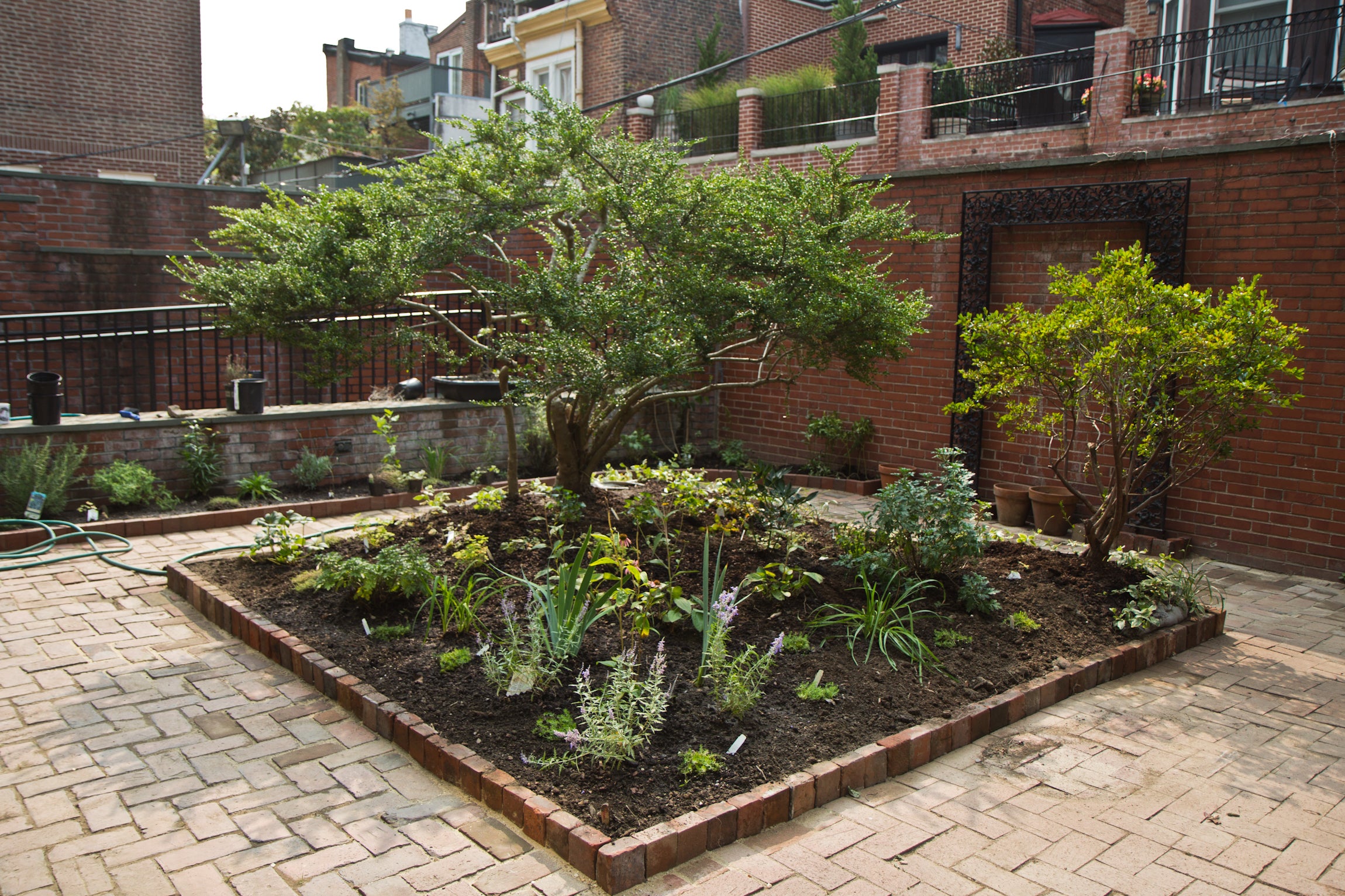
It took all summer, but Doe, with the help of volunteer neighbors, cleaned up about 1,600 square feet of urban garden, with twisted trunks of old-growth hawthorn and boxwood trees.
The stump of what had been a 30-foot oak tree is still in the middle of one of the planters.
“A squirrel planted it right in the middle of that plot,” said Doe. “It broke our heart to tear it down, but it was a little big for the place.”
The garden is newly planted with violets, roses, lilies, daisies, ivy, and wild thyme. Many of the plants have literary references inside the library, from Alice in Wonderland’s chatty flowers to the floral symbols in the Bible.
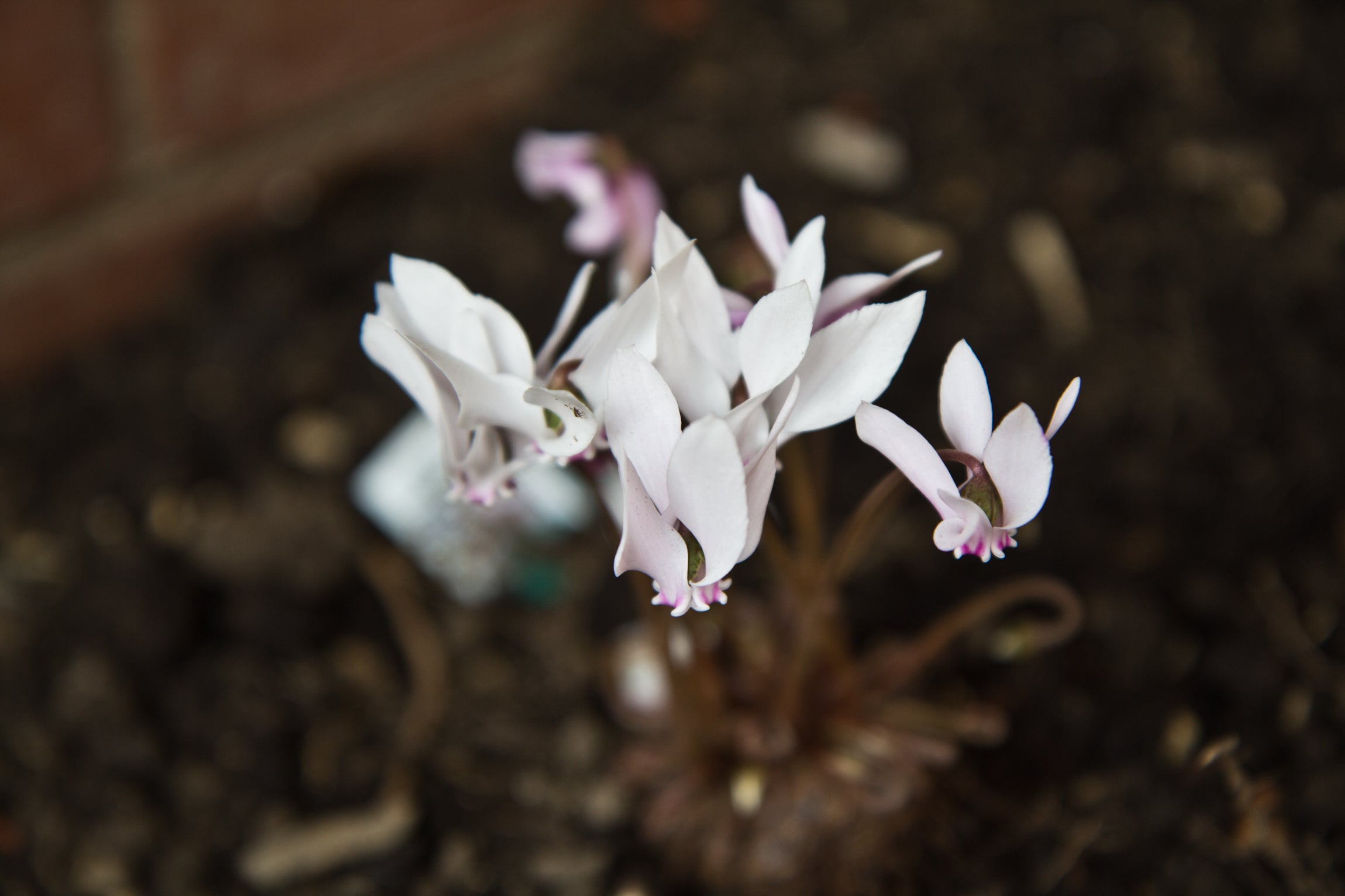
Inside the Rosenbach’s archive, they have the second, third and fourth folio printing of Shakespeare’s works, including “A Midsummer Night’s Dream” wherein the character Oberon says:
I know a bank where the wild thyme blows,
Where oxlips and the nodding violet grows,
Quite over-canopied with luscious woodbine,
With sweet musk-roses and with eglantine:
There sleeps Titania sometime of the night,
Lulled in these flowers with dances and delight.
“Nearly everybody spoke about violets at some point in time. We are lousy with violets,” said Doe. “They are adorable, they’re easy to grow, and everybody wrote about them.”
The garden was first created by the Rosenbach brothers, Philip and Abraham, who ran their rare book business out of the townhouse on Delancey Street in the early 20th century. The Rosenbach Company became one of the most successful rare book dealers in the world, and they forged personal relationships with their regular clientele.
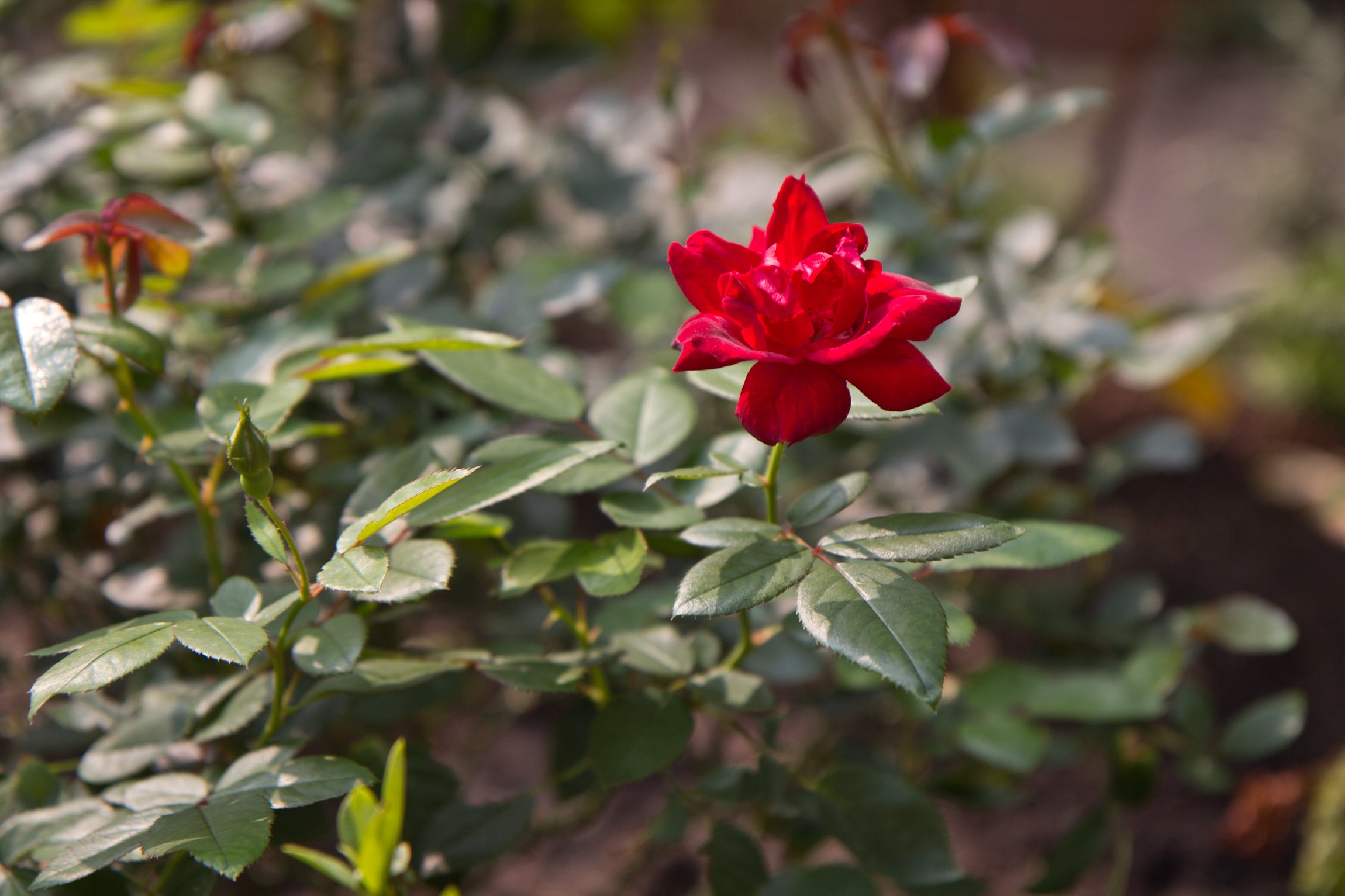
Part of the brothers’ business model was to show their clients the kind of lifestyle to which they should aspire.
“It was very European, trying for an old-world look,” said Emilie Parker, the Rosenbach’s director of education and interpretation, standing in the garden. “A lot of their clientele was new money who were trying to make their homes and their lives look old-world. That’s one of the things they were trying to do out here, too.”
There are ornate wrought-iron benches and matching pot planters. The centerpiece of the garden is a large carved marble planter resembling an ancient Roman sarcophagus. An archival photo from 1978 shows it has a matching stone frieze that was once embedded in the brick wall. Parker says the Rosenbach still has the frieze, which may be reinstalled in a future phase of renovation.
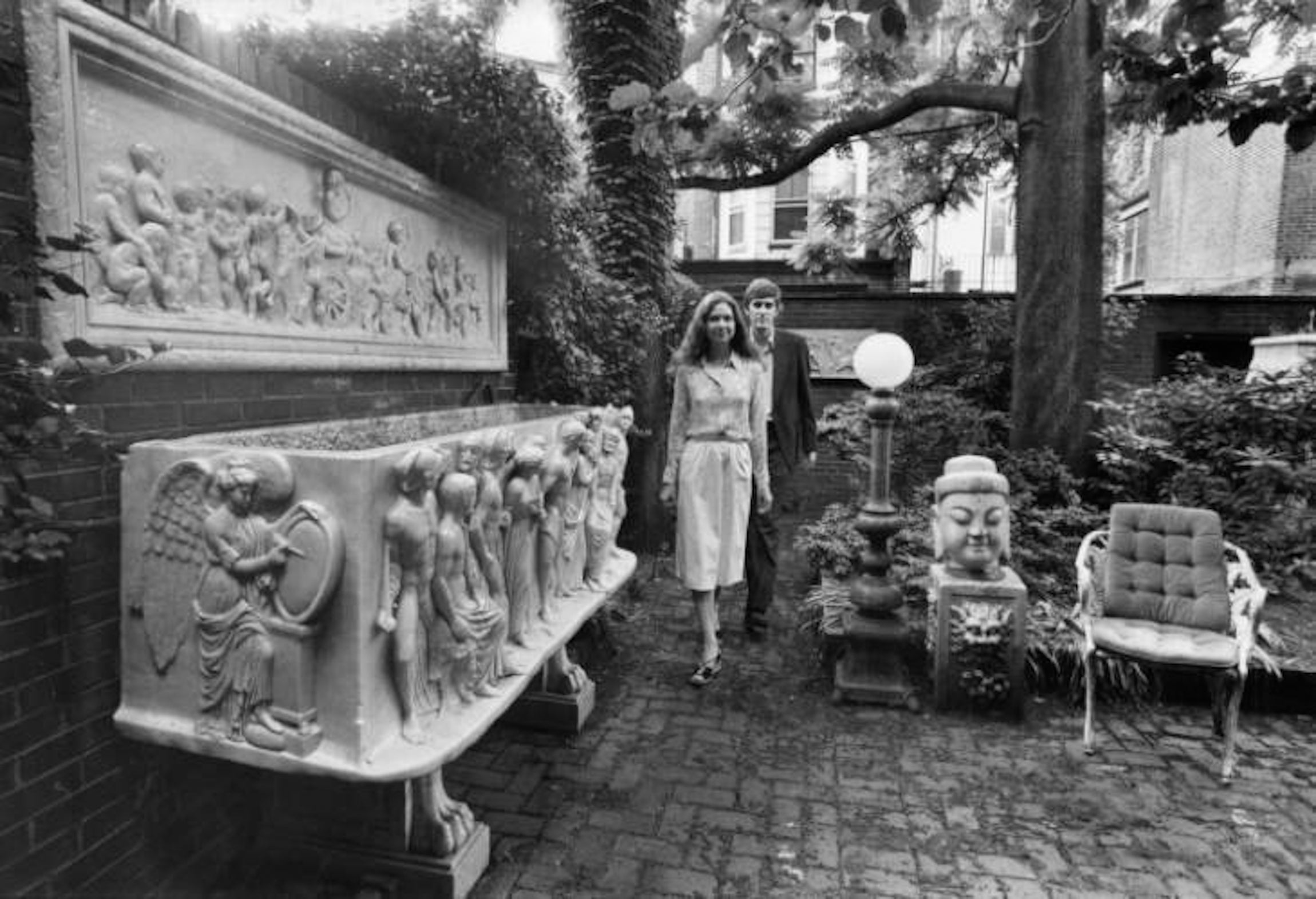
The garden had been allowed to deteriorate in favor of focusing on the Rosenbach resources inside, the collections and exhibitions. Other than keeping the wheelchair-access ramp cleared, the backyard was ignored for decades. When the library and museum had to shut down due to the pandemic, the Rosenbach sought ways to stay connected to its patrons. Reviving the garden was a way to welcome old friends back during the pandemic, and maybe attract new ones.
“This is a nice way to engage people who don’t consider themselves a heavy, heavy book nerd,” said Doe. “To get their first little toes wet at the Rosenbach.”
The Rosenbach hopes to program the garden with cultural events and lectures. For the time being, it is available to visitors in forty-five minute time slots with a downloadable self-guided tour.

Get daily updates from WHYY News!
WHYY is your source for fact-based, in-depth journalism and information. As a nonprofit organization, we rely on financial support from readers like you. Please give today.





